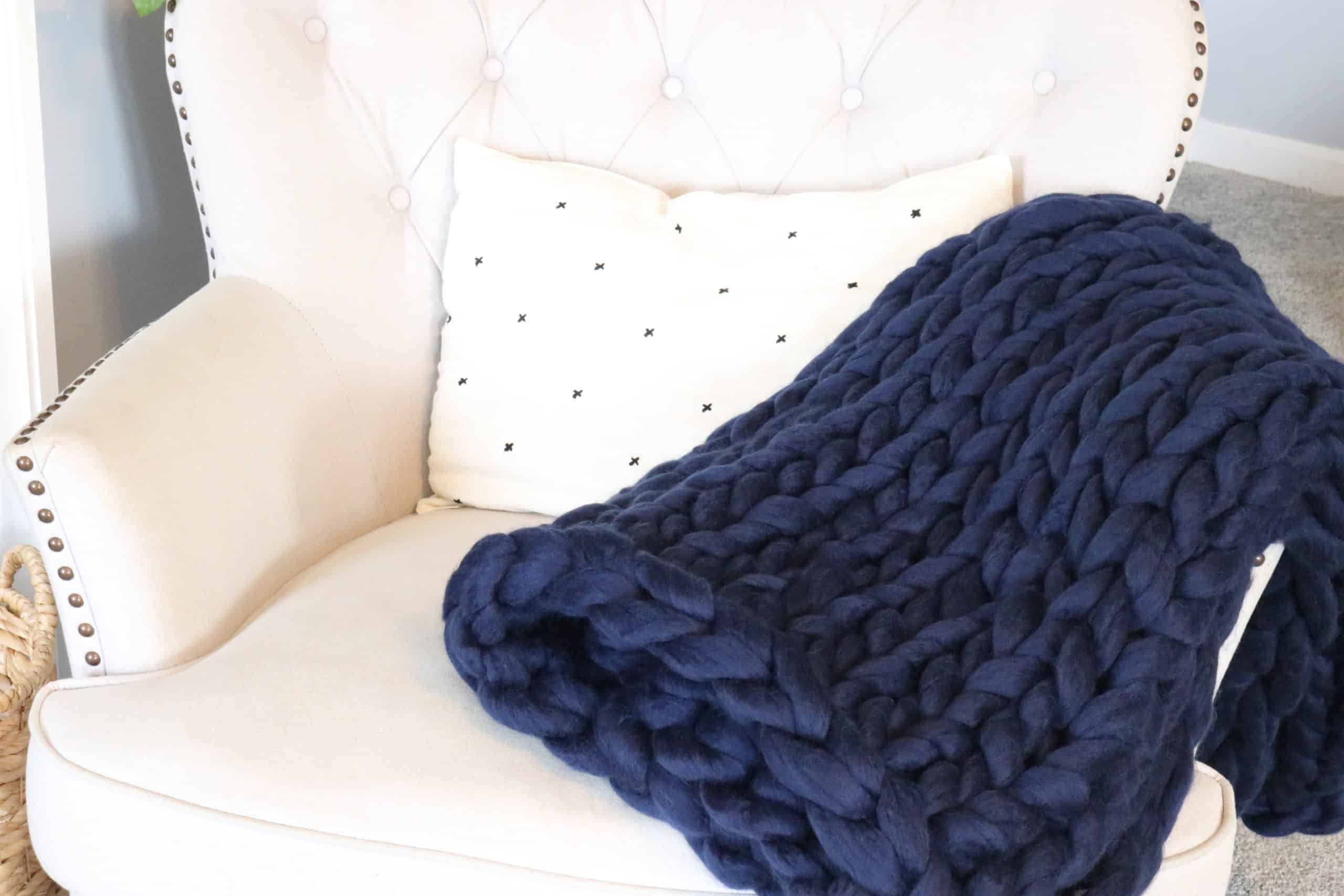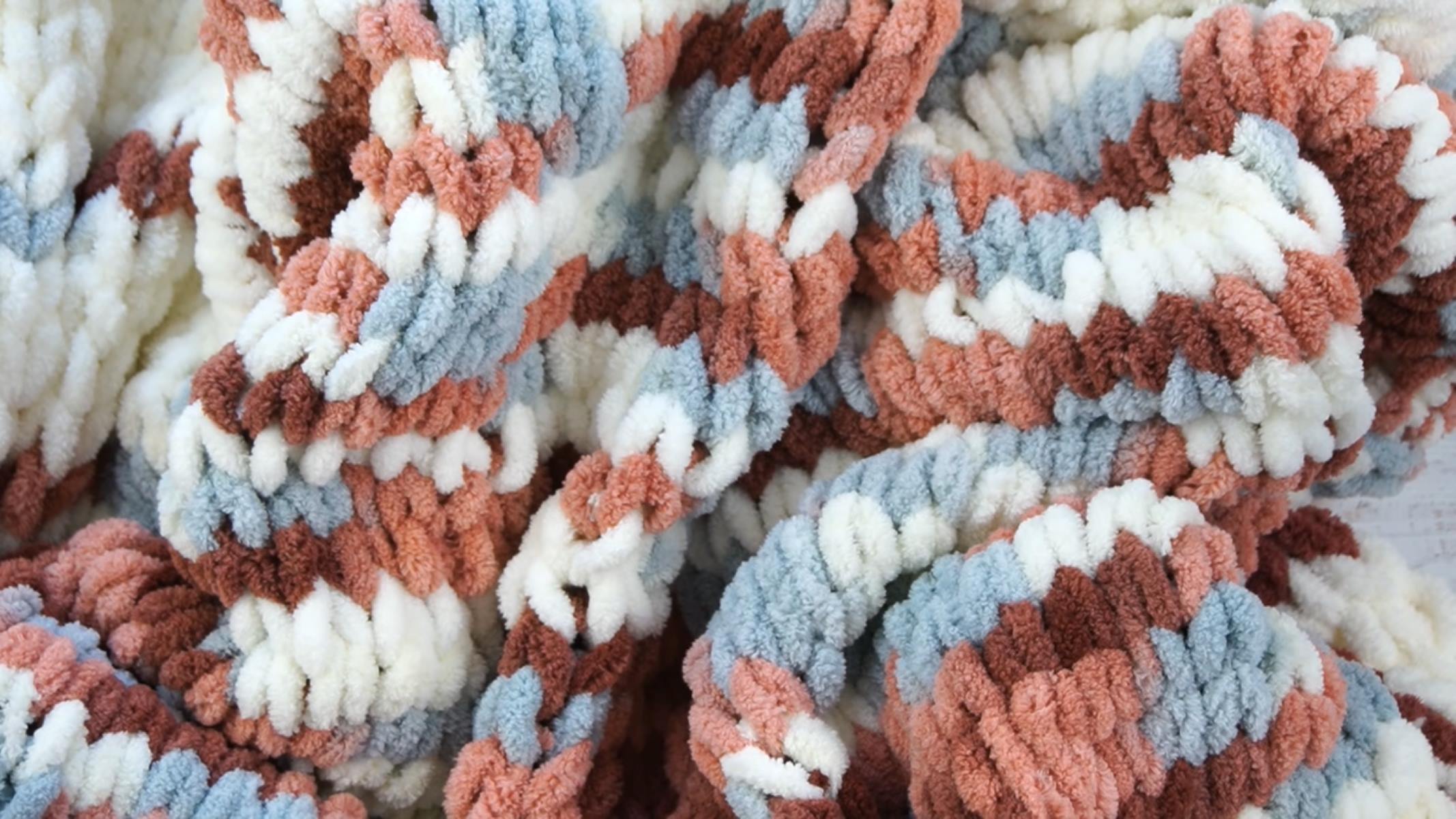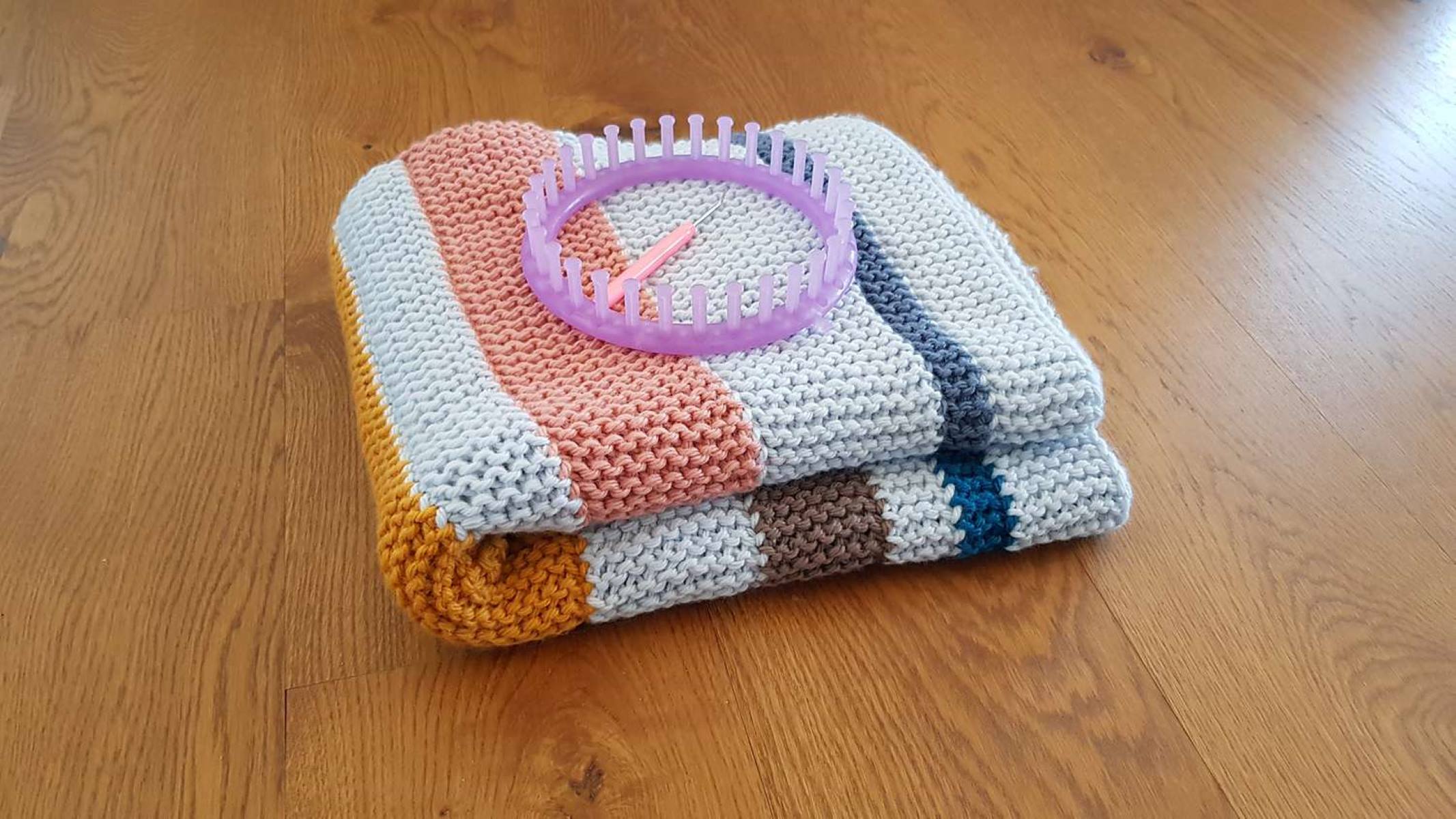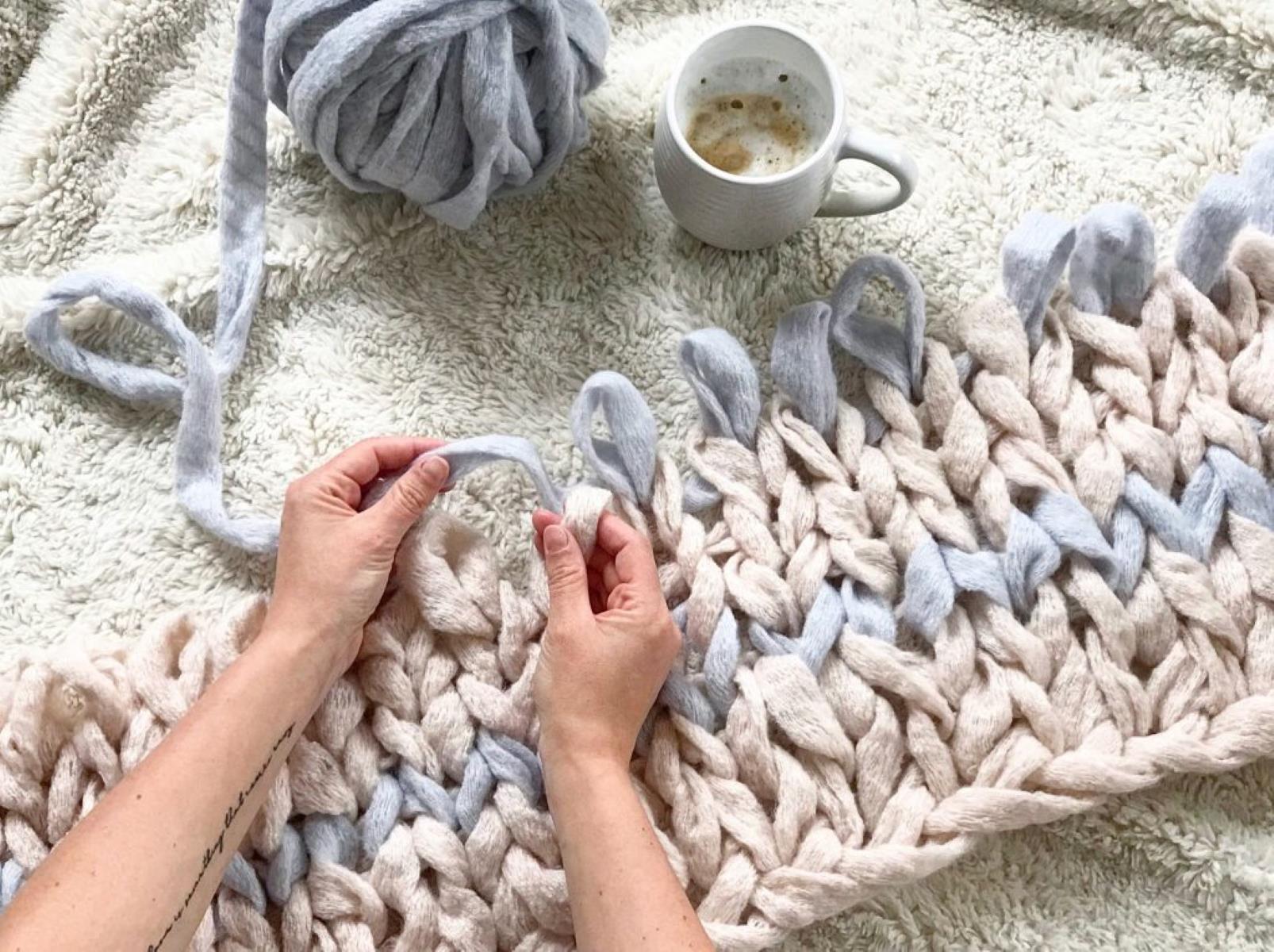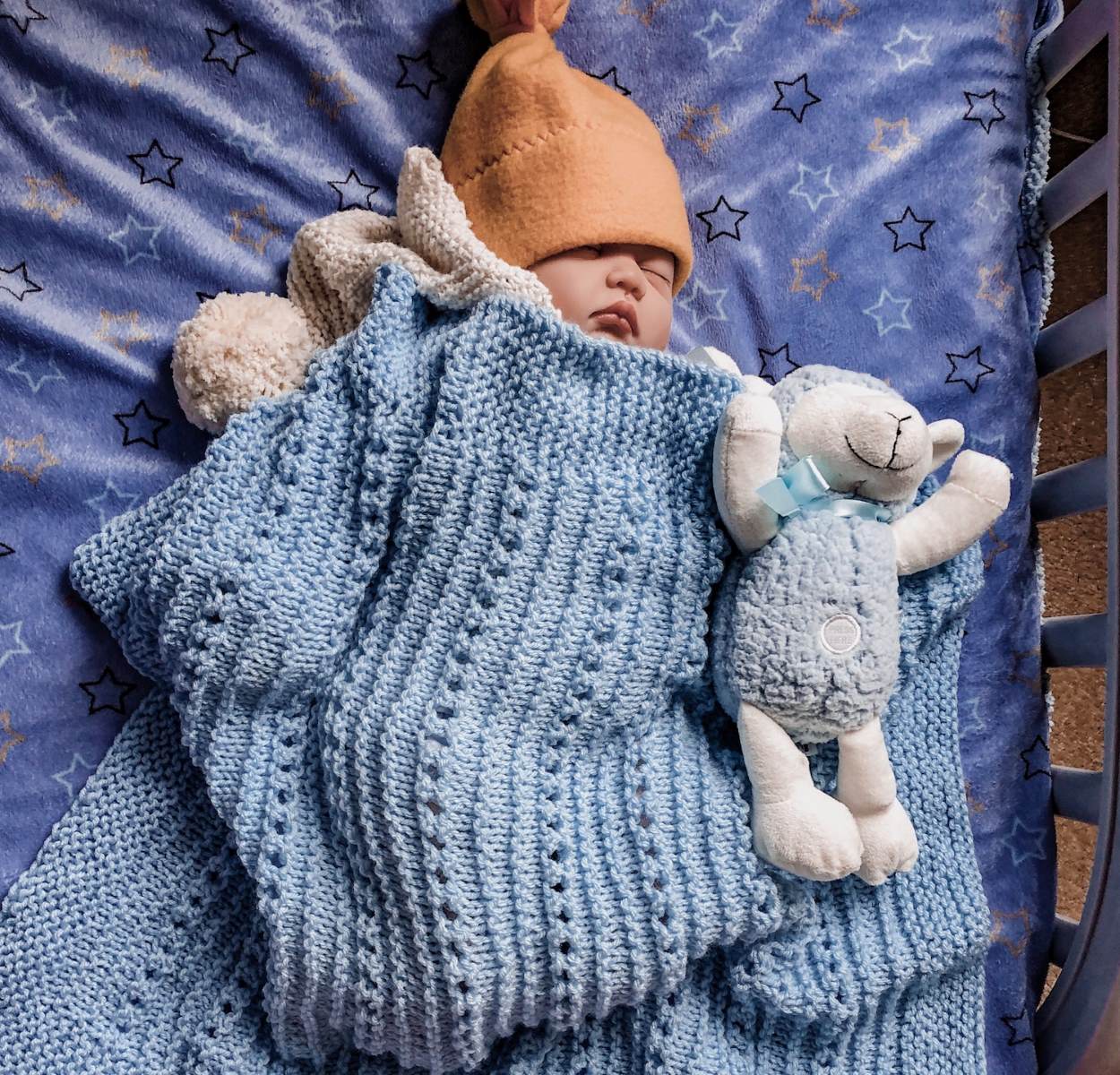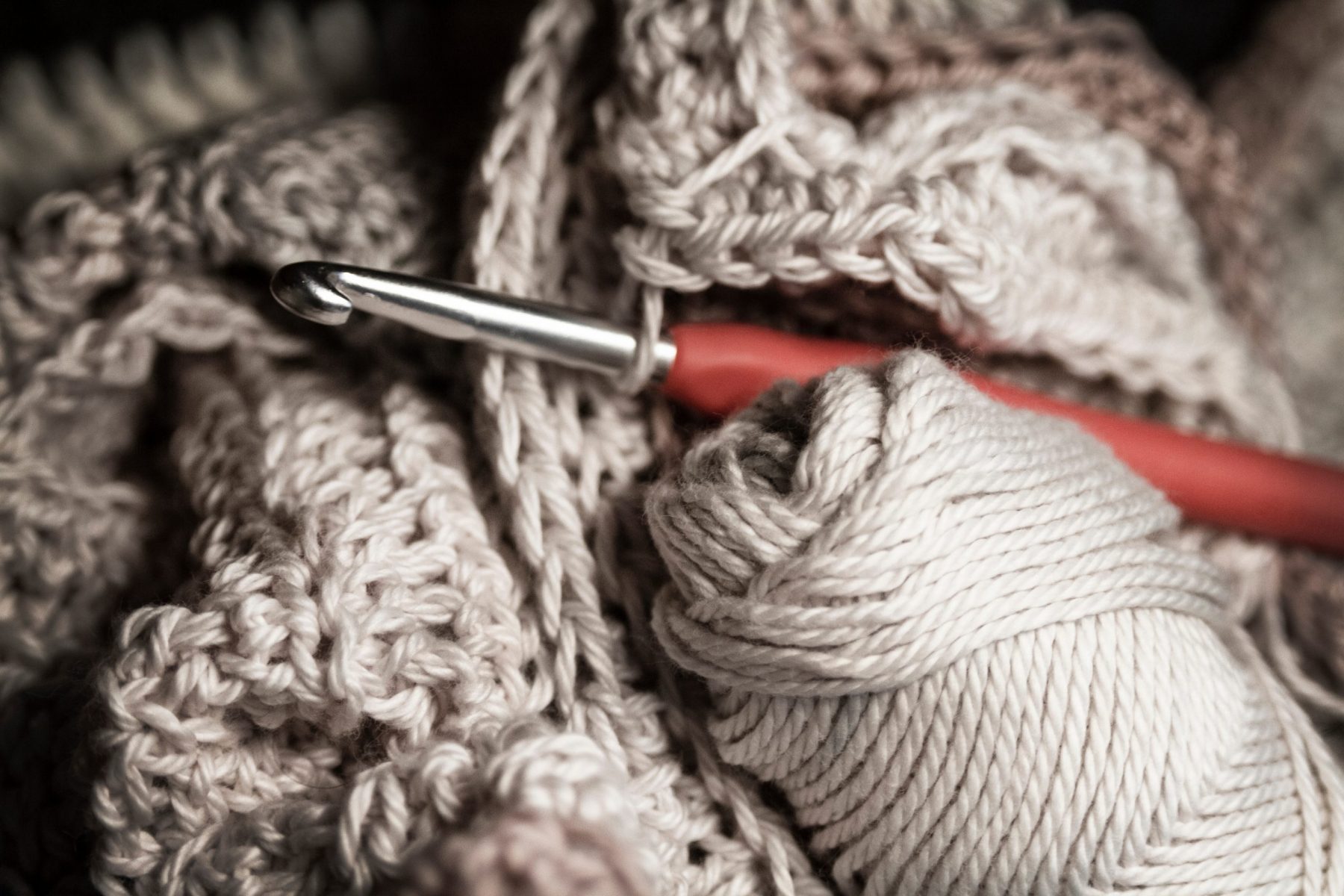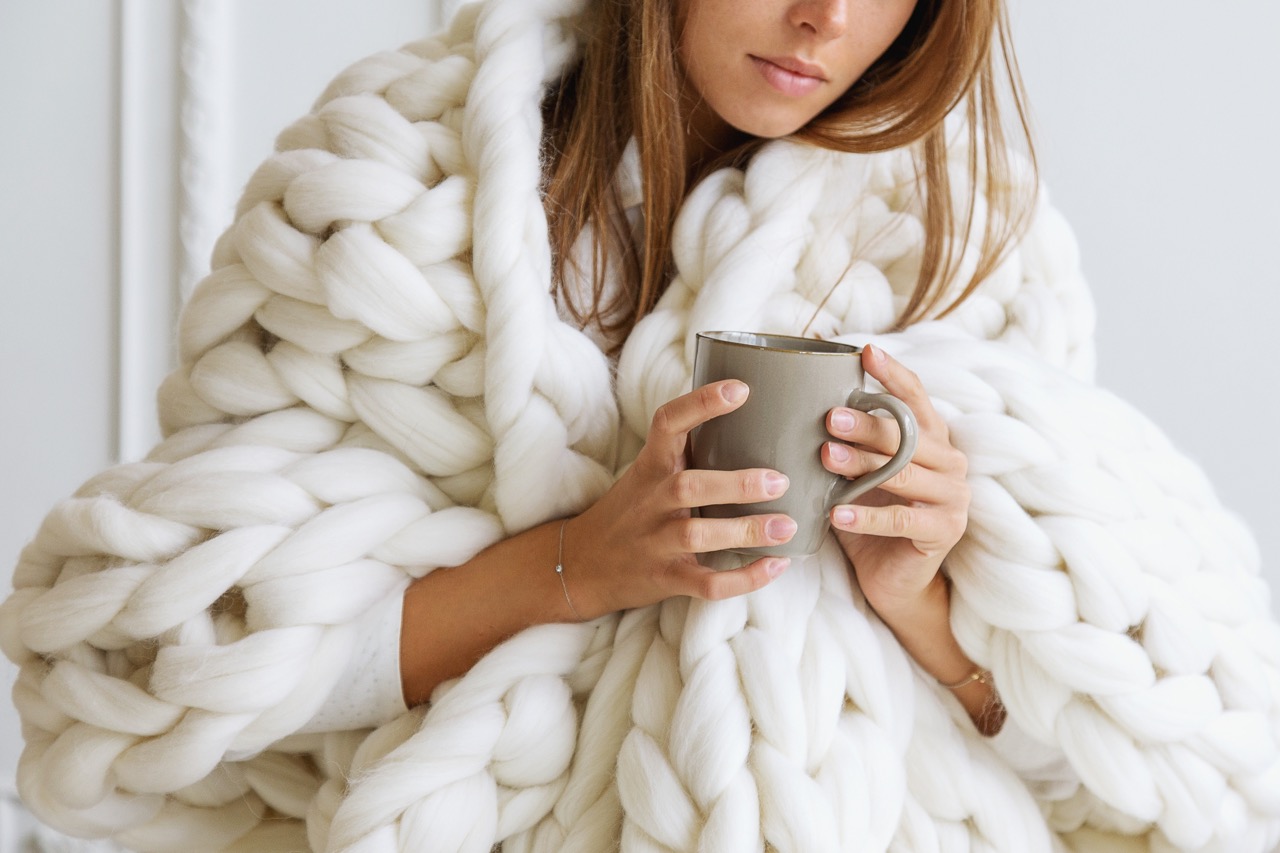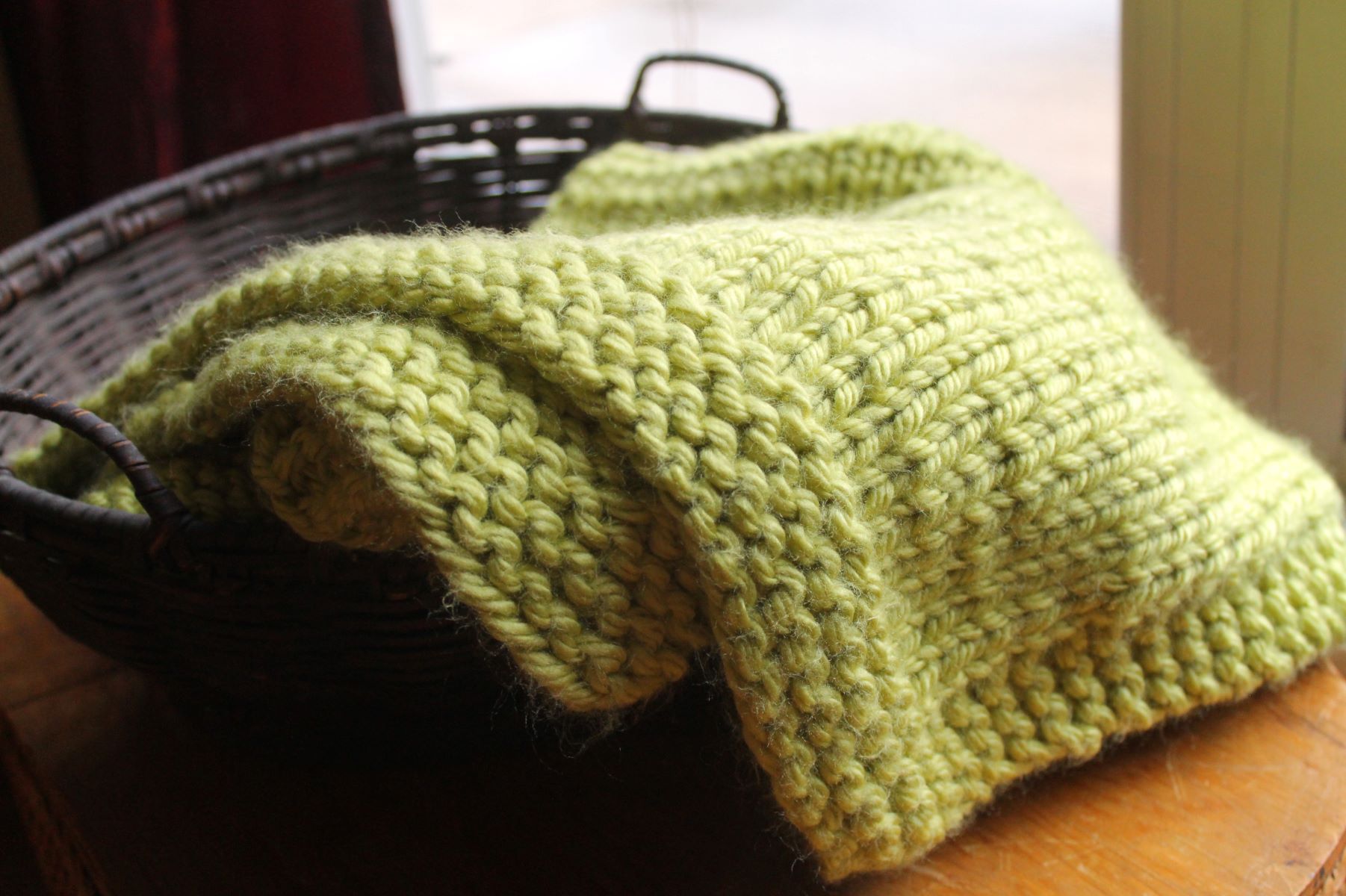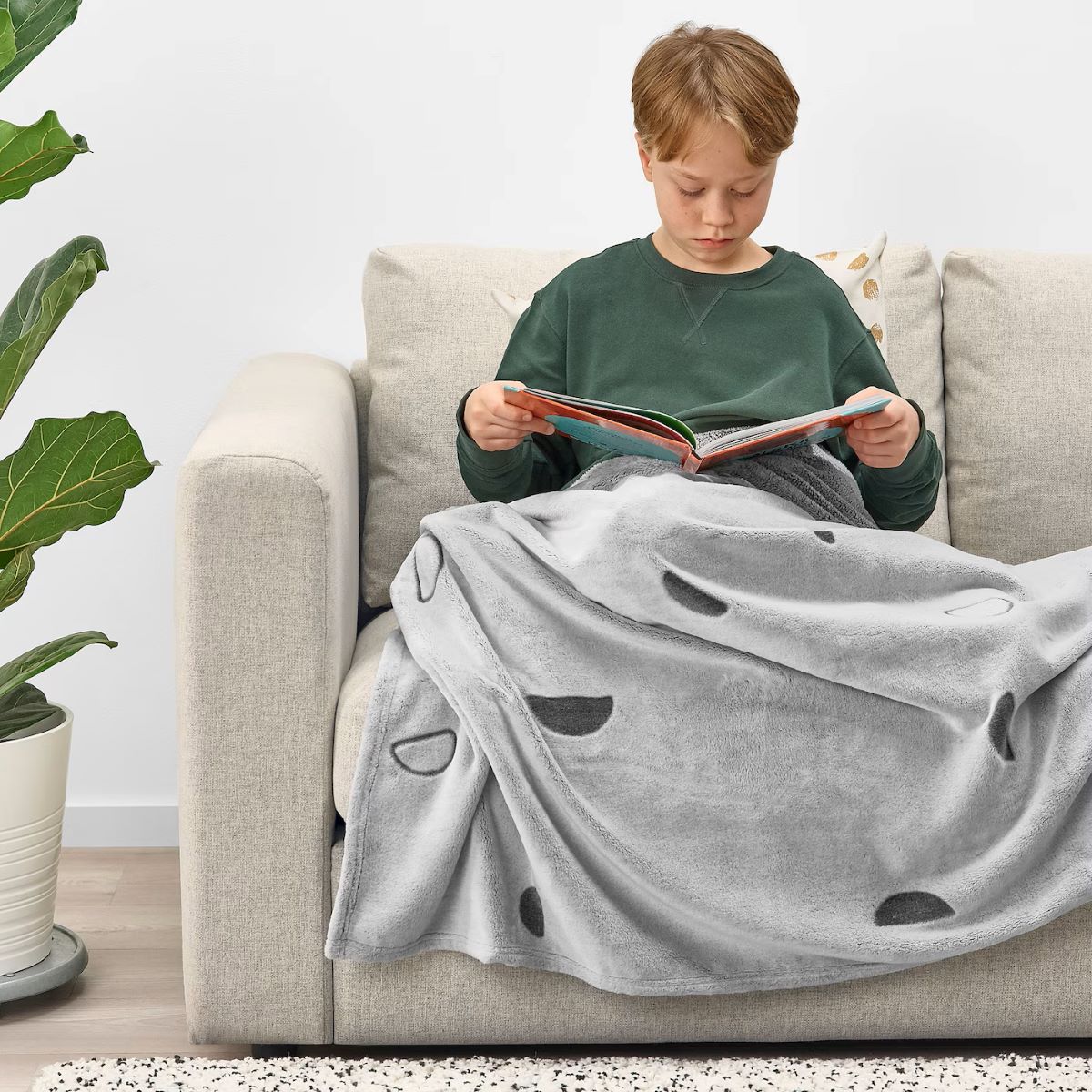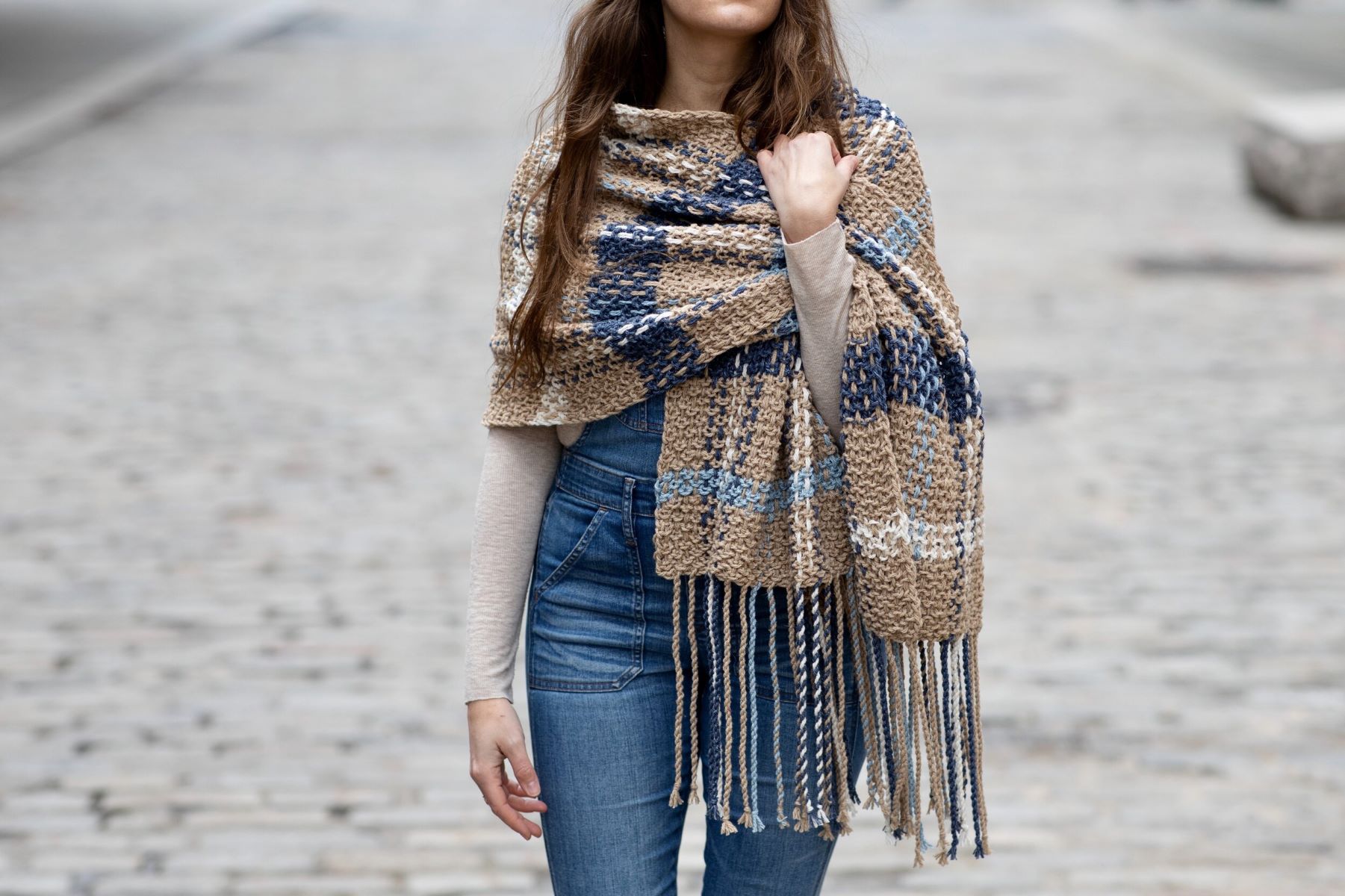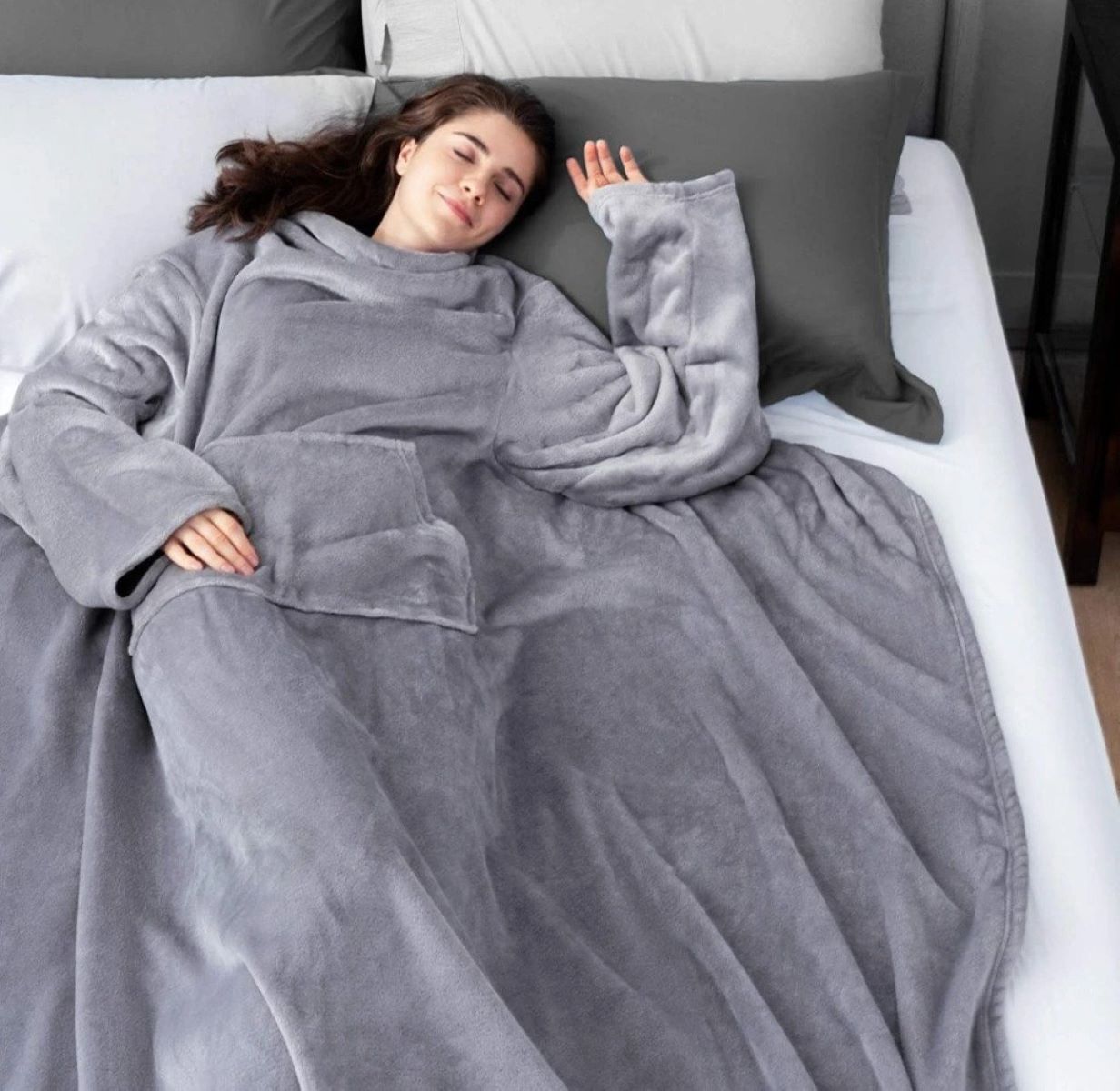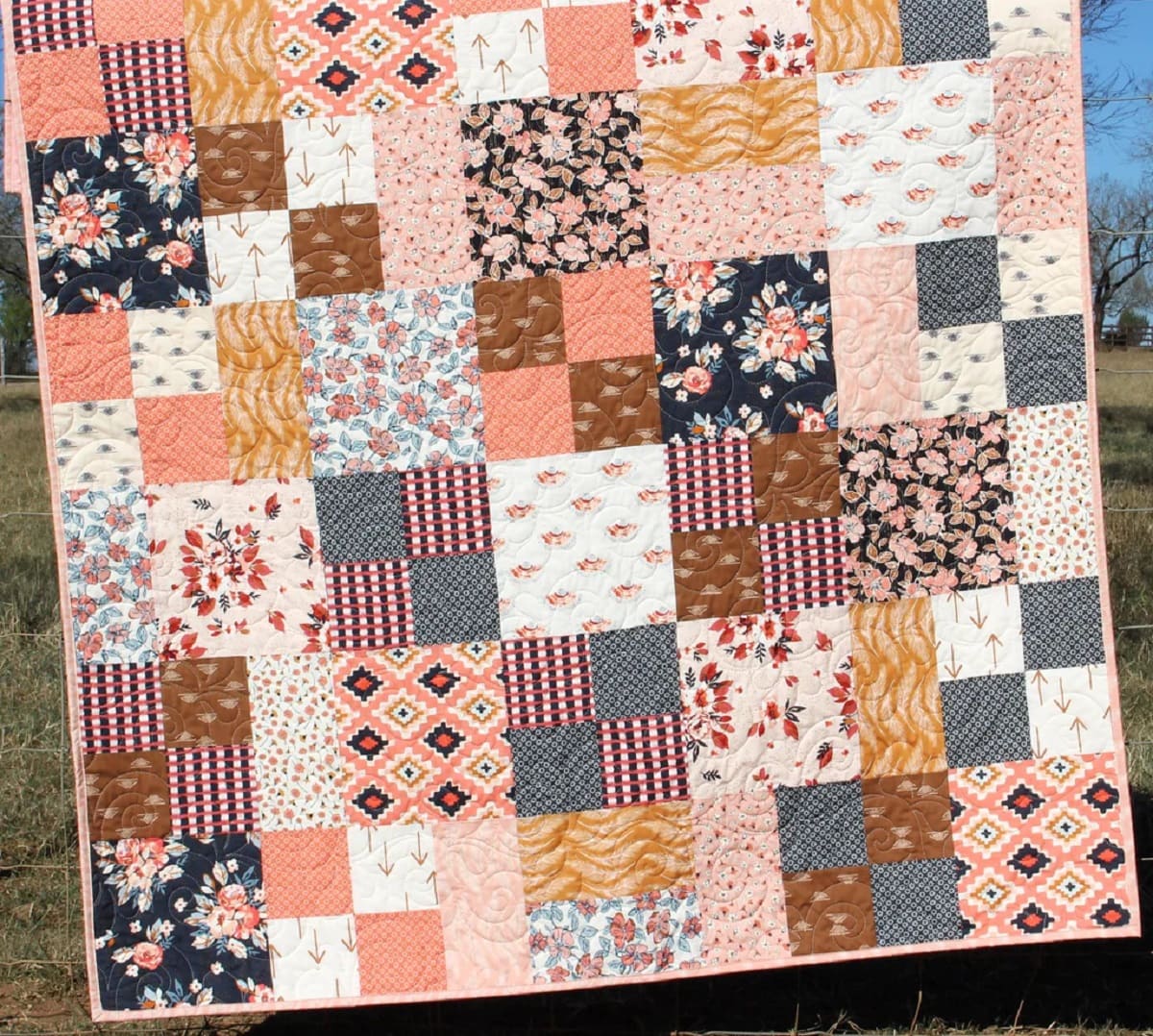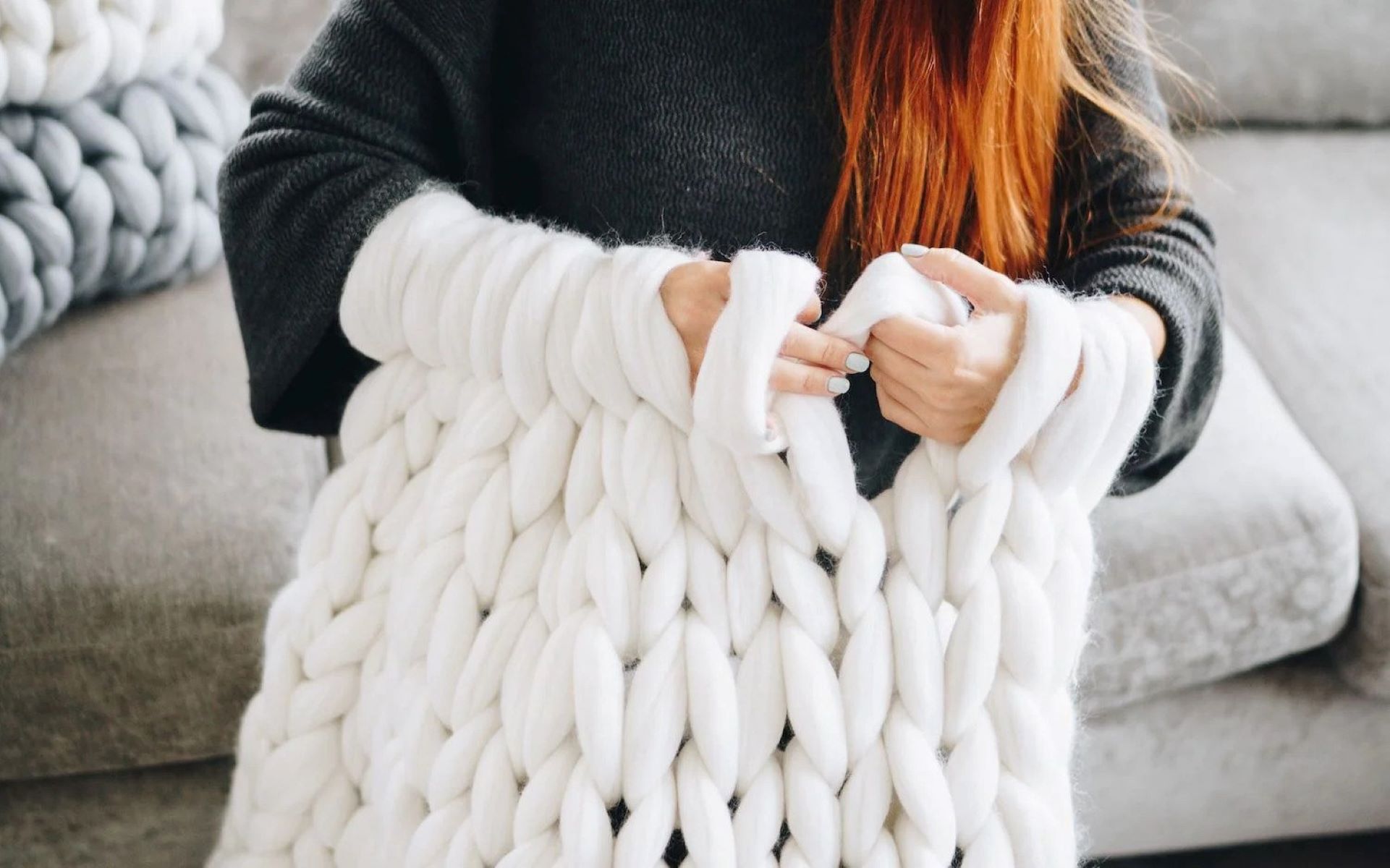

Articles
How To Make A Knitted Blanket
Modified: January 6, 2024
Learn how to make a cozy knitted blanket with our informative articles. Get step-by-step instructions and expert tips to create the perfect homemade blanket.
(Many of the links in this article redirect to a specific reviewed product. Your purchase of these products through affiliate links helps to generate commission for Storables.com, at no extra cost. Learn more)
Introduction
There’s nothing quite like the cozy feeling of curling up under a warm knitted blanket. Whether you’re a seasoned knitter or a beginner, making your own knitted blanket is a rewarding and fulfilling project that allows you to create something beautiful and practical.
In this article, we will guide you through the process of making a knitted blanket from start to finish. From choosing the right materials to mastering different knitting techniques, you’ll be well on your way to creating a blanket that will keep you warm for years to come.
Knitting is not only a relaxing and enjoyable hobby, but it also allows you to customize your creations to suit your personal style and preferences. With a wide range of yarns, colors, and stitches at your disposal, you can create a one-of-a-kind blanket that reflects your unique taste.
Whether you’re knitting for yourself or looking to make a heartfelt gift for a loved one, this guide will provide you with all the information you need to get started. So grab your needles, find a cozy spot, and let’s dive into the world of knitted blankets.
Key Takeaways:
- Knitting a blanket is a labor of love, representing moments of relaxation and creativity. Each stitch tells a unique story, making the finished blanket a cherished heirloom to be proud of.
- Proper care and attention to detail are essential for maintaining the longevity and beauty of a knitted blanket. By following care instructions and adding finishing touches, your blanket will continue to provide warmth and comfort for years to come.
Read more: How To Make A Hand Knit Blanket
Materials Needed
Before you begin your knitting adventure, it’s important to gather all the necessary materials. Here’s a list of what you’ll need:
- Knitting Needles: Choose needles that are suitable for the yarn you plan to use. The size of the needles will determine the tension and the drape of your finished blanket.
- Yarn: Select a yarn that is soft, warm, and durable. Depending on your preference, you can choose from different weights and fibers. Acrylic, Merino wool, and cotton are popular choices for knitted blankets.
- Tape Measure: A tape measure will help you keep track of your progress and ensure that your blanket is the desired size.
- Scissors: You’ll need a pair of sharp scissors to cut the yarn at the end of your project.
- Tapestry Needle: This needle is used for weaving in loose ends and sewing up any seams.
- Stitch Markers: Stitch markers can be used to identify specific stitches or mark pattern repeats.
By having all these materials on hand, you’ll be well-equipped to start your knitting journey with confidence.
Key Takeaways:
- Knitting a blanket is a labor of love, representing moments of relaxation and creativity. Each stitch tells a unique story, making the finished blanket a cherished heirloom to be proud of.
- Proper care and attention to detail are essential for maintaining the longevity and beauty of a knitted blanket. By following care instructions and adding finishing touches, your blanket will continue to provide warmth and comfort for years to come.
Read more: How To Make A Hand Knit Blanket
Materials Needed
Before you begin your knitting adventure, it’s important to gather all the necessary materials. Here’s a list of what you’ll need:
- Knitting Needles: Choose needles that are suitable for the yarn you plan to use. The size of the needles will determine the tension and the drape of your finished blanket. Circular or straight needles can be used, depending on your preference and the size of the blanket you intend to make.
- Yarn: Select a yarn that is soft, warm, and durable. Depending on your preference, you can choose from different weights and fibers. Acrylic, Merino wool, and cotton are popular choices for knitted blankets. Consider the color and texture of the yarn as well, as it will contribute to the overall look and feel of your blanket.
- Tape Measure: A tape measure will help you keep track of your progress and ensure that your blanket is the desired size. It’s essential for measuring the gauge, which determines how many stitches and rows are needed to create a certain size.
- Scissors: You’ll need a pair of sharp scissors to cut the yarn at the end of your project. Make sure they are strong enough to cut through the yarn without fraying or damaging it.
- Tapestry Needle: This needle is used for weaving in loose ends and sewing up any seams. It should have a large eye to accommodate the thickness of the yarn and a blunt end to prevent splitting the fibers.
- Stitch Markers: Stitch markers can be used to identify specific stitches or mark pattern repeats. They come in various forms, such as plastic rings or removable clips, and are especially helpful for more complex patterns.
Having all these materials on hand will make the process of knitting your blanket more convenient and enjoyable. They are essential tools that will help you create a well-crafted and professional-looking finished product.
Don’t forget to consider the quantity of yarn needed for your specific blanket size and pattern. Consult the pattern instructions or use a yarn calculator to determine the approximate amount of yarn required. It’s always a good idea to purchase a little extra to account for variations in tension and potential mistakes.
Now that you have all the necessary materials, you’re ready to dive into the world of knitting and create a beautiful, cozy blanket that will bring warmth and comfort to your life.
Getting Started
Now that you have gathered all the necessary materials, it’s time to get started on your knitted blanket. Before jumping into the knitting process, take some time to familiarize yourself with the basics and prepare your workspace.
Find a Comfortable Spot: Choose a quiet and well-lit area where you can focus on your knitting. Make sure you have a comfortable chair and good lighting to avoid straining your eyes.
Clean and Organize: Clear your work area of any clutter, keeping only the tools and materials you’ll need for the project. This will help prevent any distractions or potential accidents.
Read and Understand the Pattern: If you’re following a pattern, take the time to carefully read and understand the instructions before you begin. Pay attention to any special stitches, stitch counts, and measurements that are mentioned. This will ensure that you have a clear understanding of the project’s requirements.
Practice Basic Knitting Stitches: If you’re new to knitting, it’s a good idea to practice the basic knitting stitches before starting your blanket. This will help you build confidence and familiarize yourself with the motions of knitting. Practice knitting and purling stitches until you feel comfortable with the techniques.
Create a Swatch: It’s always a good idea to create a swatch before starting your blanket. A swatch is a small sample of knitting that helps you gauge the correct tension and determine your stitch count per inch. Follow the pattern’s recommended gauge and knit a small square using the yarn and needles you plan to use for your blanket. Measure the swatch and compare it to the gauge specified in the pattern. Adjust your needle size if necessary to achieve the correct gauge.
Take Your Time: Knitting is a skill that requires patience and practice. Don’t rush the process, especially if you’re a beginner. Take your time to ensure that each stitch is even and consistent. With practice, your speed will naturally increase, and you’ll become more confident in your knitting abilities.
Now that you’re prepared and ready to start knitting, it’s time to move on to the next steps: choosing the right yarn and needles. These choices will greatly impact the finished look and feel of your knitted blanket, so it’s important to choose wisely.
Choosing the Right Yarn and Needles
When it comes to creating a knitted blanket, choosing the right yarn and needles is crucial. These choices will determine the overall look, feel, and durability of your finished project. Here are some factors to consider when making your selection:
Yarn Weight: Yarn weight refers to the thickness of the yarn strand. Common yarn weights for blankets include bulky, worsted, and DK (double knitting). Bulky yarns are thicker and knit up quickly, resulting in a cozy and warm blanket. Worsted weight yarns are versatile and suitable for a variety of blanket designs. DK weight yarns are lighter and more suitable for lightweight blankets. Consider the desired weight and warmth of your blanket when choosing the yarn.
Yarn Fiber: Different yarn fibers offer different characteristics. Acrylic yarns are affordable, easy to care for, and available in a wide range of colors. Wool yarns, such as Merino wool, are known for their warmth and natural elasticity. Cotton yarns are lightweight and breathable, making them ideal for warmer climates. Consider the properties and care instructions of each fiber to determine which is best for your needs.
Needle Size: The size of your knitting needles will determine the tension and drape of your blanket. Thicker needles create a looser tension and larger stitches, resulting in an airy and lightweight blanket. Smaller needles create a tighter tension and smaller stitches, resulting in a denser and warmer blanket. Refer to the yarn label or pattern instructions to determine the recommended needle size for your chosen yarn.
Color and Texture: The color and texture of the yarn will significantly impact the appearance of your blanket. Consider the color scheme and style you envision for your blanket. Solid colors create a classic and timeless look, while variegated or self-striping yarns add visual interest and dimension. Experiment with different textures, such as smooth, fuzzy, or textured yarns, to achieve the desired look and feel.
Budget: Take your budget into consideration when choosing yarn and needles. While high-quality and luxurious yarns may be tempting, there are also affordable options that can produce beautiful results. Consider the size of your blanket and the amount of yarn needed to estimate the total cost of your project.
Personal Preference: Ultimately, your personal preference and knitting style should guide your yarn and needle choices. Take into account any previous experience you have with certain yarns or needles and choose accordingly. Listen to your instincts and select materials that inspire you and make you excited to start knitting.
By carefully considering these factors, you can choose yarn and needles that align with your vision and create a knitted blanket that is both visually pleasing and functional. Once you’ve made your choices, it’s time to start casting on and bringing your blanket to life.
Read more: How To Make A Finger Knit Blanket
Casting On
Now that you have the right yarn and needles, it’s time to cast on and start knitting your blanket. Casting on is the process of creating the foundation row of stitches on your needle. Here’s how to do it:
Step 1: Hold the needle with the slipknot in your right hand and the other needle in your left hand. The slipknot should be loose enough to allow the needle to move freely through it.
Step 2: Insert the right needle into the slipknot from front to back.
Step 3: Position the yarn so that it is draped over the back of the right needle, with the tail end hanging on the right side and the working yarn on the left side.
Step 4: Use your right thumb and index finger to hold the slipknot and create tension on the yarn.
Step 5: With the right needle, wrap the yarn around the back of the left needle from right to left, forming a loop around the left needle.
Step 6: Use the right needle to pull the loop through the slipknot, creating a new loop on the right needle.
Step 7: Gently tighten the stitch, but ensure it’s not too tight, allowing it to move freely along the needle.
Step 8: Repeat steps 5 to 7 until you have cast on the required number of stitches for your blanket. Count the stitches periodically to ensure accuracy.
There are different methods of casting on, such as the long-tail cast-on or the knit cast-on, which provide different looks and stretchiness. Choose the method that you’re most comfortable with or follow the pattern instructions if you’re using one.
As you cast on, ensure that your stitches are even and not too loose or too tight. Consistent tension in your cast-on stitches will help maintain an even edge for your blanket.
Once you have cast on all the stitches for your blanket, you’re ready to start knitting the first row and begin the exciting journey of creating your very own knitted blanket.
Knitting the First Row
With your cast-on stitches securely on your needle, it’s time to start knitting the first row of your blanket. The first row sets the foundation for your project and determines the stitch pattern you’ll be using. Here’s how to knit the first row:
Step 1: Hold the needle with the cast-on stitches in your left hand and the empty needle in your right hand.
Step 2: Insert the right needle into the first stitch on the left needle, from left to right, going behind the left needle.
Step 3: With the yarn in your right hand, bring it over the right needle, forming a loop in front of the stitch.
Step 4: Use the right needle to draw the loop of yarn through the stitch from back to front, pulling the stitch off the left needle and onto the right needle.
Step 5: Gently tighten the stitch on the right needle, but be careful not to pull it too tight.
Step 6: Continue knitting each stitch in the same manner until you reach the end of the row. Pay attention to your tension, ensuring that your stitches are uniform in size.
Step 7: Turn your work by swapping the needles, with the needle holding the stitches now in your left hand and the empty needle in your right hand.
Congratulations! You’ve completed your first row of knitting. Take a moment to admire your progress and check that your stitches are looking even and consistent.
Keep in mind that if you’re following a pattern, the first row may have specific instructions for different stitches or stitch patterns that you need to follow. Make sure to read the pattern carefully and understand any special instructions before you start knitting.
As you knit the first row, it’s common to have some initial tension and nerves. However, as you continue knitting, you’ll find your rhythm and start to relax into the process. Remember to take breaks when needed and enjoy the meditative and calming nature of knitting.
Once you’re comfortable with knitting the first row, you can continue using the same stitch pattern or explore different stitch patterns to add variety and texture to your blanket. Don’t be afraid to experiment and get creative with your knitting!
Now that you have completed the first row, it’s time to dive deeper into the knitting process and learn more about different stitches and techniques that you can incorporate into your knitted blanket.
Continuing with the Knit Stitch
Now that you’ve mastered the first row of knitting, you can continue with the knit stitch to create a beautiful and cohesive fabric for your blanket. The knit stitch is one of the basic building blocks of knitting and forms a smooth and textured surface. Here’s how to continue with the knit stitch:
Step 1: Hold the needle with the stitches in your left hand and the empty needle in your right hand.
Step 2: Insert the right needle into the first stitch on the left needle, going from left to right and behind the left needle.
Step 3: Wrap the yarn around the right needle, from back to front, creating a loop in front of the stitch.
Step 4: Use the right needle to draw the loop of yarn through the stitch from back to front, pulling the stitch off the left needle and onto the right needle.
Step 5: Gently tighten the stitch on the right needle, but be careful not to make it too tight.
Step 6: Repeat steps 2 to 5 for each stitch across the row, knitting every stitch until you reach the end.
Step 7: Turn your work by swapping the needles, with the needle holding the stitches now in your left hand and the empty needle in your right hand.
Continue knitting each row in the same manner, repeating steps 2 to 6. As you work more rows, you’ll start to see the fabric of your blanket take shape.
Remember to maintain a consistent tension with your stitches, neither too loose nor too tight. Even tension will result in an even and professional-looking fabric.
The knit stitch creates a beautiful and smooth “V” pattern on the right side of the fabric, and a series of horizontal bumps on the wrong side. If you prefer a different texture, you can explore different stitch patterns to add variety and interest to your blanket.
As you continue with the knit stitch, it’s important to stay patient and enjoy the process. Knitting can be a calming and meditative activity, allowing you to unwind and channel your creativity.
If you make a mistake or drop a stitch, don’t panic. Learning how to fix mistakes is an important part of knitting. You can use a crochet hook or the tip of your knitting needle to pick up dropped stitches and correct any errors.
Keep knitting and working rows, steadily increasing the length of your blanket. Before you know it, you’ll have a beautiful and cozy knitted blanket that you can cherish for years to come.
In the next section, we’ll explore how you can add variety and interest to your blanket by incorporating different stitch patterns.
When making a knitted blanket, use a larger needle size than recommended for the yarn to create a looser, more comfortable fabric.
Adding Variety with Different Stitches
As you continue knitting your blanket, you may want to add some variety and visual interest to your fabric. One way to achieve this is by incorporating different stitch patterns. By exploring various stitches, you can create unique textures and designs that make your blanket truly special. Here are a few stitches you can experiment with:
Garter Stitch: The garter stitch is created by knitting every row, resulting in a textured fabric with ridges on both sides. It’s a simple yet classic stitch pattern that adds depth and substance to your blanket.
Stockinette Stitch: The stockinette stitch is created by knitting one row and purling the next row. This forms a smooth and flat fabric on the right side and a series of “V” shapes on the wrong side. It’s a versatile stitch pattern that is widely used for its simplicity and clean appearance.
Rib Stitch: The rib stitch creates alternating vertical ridges of knit and purl stitches, resulting in a stretchy and textured fabric. Common rib stitch patterns include 1×1 (alternating knit and purl stitches) or 2×2 (alternating two knit stitches and two purl stitches).
Seed Stitch: The seed stitch alternates knit and purl stitches within the same row, creating a bumpy texture that resembles seeds. It’s a versatile stitch pattern that adds depth and visual interest to your blanket.
Cable Stitch: Cable stitches are formed by crossing a set of stitches over another set, creating a twisting or braided effect. Cable stitches can be simple or complex, depending on the number of stitches involved and the pattern instructions.
Lace Stitch: Lace stitches create delicate and open designs by strategically increasing and decreasing stitches. They often feature decorative motifs such as flowers, leaves, or geometric patterns. Lace stitches can add a touch of elegance and femininity to your blanket.
These are just a few examples of stitch patterns you can incorporate into your blanket. There are endless possibilities to explore, so don’t be afraid to get creative or adapt existing patterns to suit your vision.
When working with different stitch patterns, it’s essential to read and understand the pattern instructions. Pay attention to any special stitches or techniques required, such as yarn overs or slip stitches. Take your time and practice the new stitches before incorporating them into your blanket.
Remember, adding different stitches can also change the gauge and dimensions of your blanket. Keep track of your stitch count and consider making gauge swatches to ensure the desired size and fit.
By incorporating different stitch patterns, you can make your blanket even more unique and showcase your knitting skills. Enjoy the process of discovering new stitches and watching your blanket come to life with every row.
In the next section, we’ll explore how you can create stripes or patterns within your knitted blanket to further personalize your project.
Read more: How To Wash A Knitted Blanket
Creating Stripes or Patterns
If you’re looking to elevate the visual appeal of your knitted blanket, creating stripes or patterns can be a great way to add interest and personality. Stripes and patterns can be achieved by using different colors or by incorporating stitch variations. Here are some techniques to help you create stripes or patterns in your knitted blanket:
Color Stripes: One of the simplest ways to introduce stripes is by switching yarn colors. You can choose complementary or contrasting colors to create bold or subtle stripes, depending on your aesthetic preference. To create stripes, knit a set number of rows with one color, then switch to a different color and continue knitting.
Fair Isle: Fair Isle, also known as stranded knitting, involves knitting with two or more colors in the same row to create intricate patterns. The colors are carried along the back of the work as you switch between them. Fair Isle can be used to create geometric designs or traditional motifs.
Intarsia: For larger, block-like patterns, intarsia is a technique that allows you to knit different colors within specific sections of your blanket. Each color section is knitted separately, and the yarn is twisted at the color change to prevent holes. Intarsia is often used for creating images or bold geometric designs.
Textured Patterns: Through the use of different stitches and stitch patterns, you can create textured patterns within your blanket. Consider incorporating stitches like cables, lace, bobbles, or seed stitch to add dimension and interest to your fabric. Experiment with different combinations and arrangements to achieve the desired effect.
Striped Colorwork: Striped colorwork involves using two or more colors within a row to create stripes or patterns. This technique can be used to create intricate geometric designs or simple stripes using knit and purl stitches. Working with multiple colors adds visual depth and can make your blanket stand out.
When incorporating stripes or patterns, it’s important to plan ahead and consider yarn management. Be mindful of how you carry the unused yarn strands along the back of your work, ensuring they are not too loose or too tight. Practice even tension to maintain a consistent fabric throughout.
Take the time to swatch and experiment with different stitch patterns or color combinations before starting your blanket. This will help you visualize how the stripes or patterns will look and allow you to make any necessary adjustments.
Creating stripes or patterns in your knitted blanket allows you to express your creativity and personalize your project. Whether you opt for classic stripes, intricate designs, or a combination of both, adding these elements will make your blanket truly unique and eye-catching.
In the next section, we’ll explore how to shape your blanket by increasing or decreasing stitches to create a desired size or design.
Shaping the Blanket
Shaping your blanket can add dimension and structure to your project, allowing you to create specific designs or achieve the desired size. Shaping involves increasing or decreasing stitches at specific points to create curves, corners, or tailored edges. Here are a few techniques you can use to shape your knitted blanket:
Increasing Stitches: Increasing stitches is used to add width or create gradual or sudden expansions in your blanket. The most common method of increasing stitches is the knit front and back (KFB) or make one (M1) technique. These techniques involve knitting into the front and back of a stitch to create two stitches from one.
Decreasing Stitches: Decreasing stitches is used to reduce width or create shaping that narrows the edges of your blanket. Popular techniques for decreasing stitches include knit two together (K2tog), slip slip knit (SSK), or slip slip purl (SSP). These techniques involve knitting two stitches together or manipulating stitches to reduce their number.
Shaping with Short Rows: Short rows are partial rows of knitting that create irregular or asymmetrical shaping within your blanket. They are often used to create curves or add length in specific areas. The most common method of working short rows is the wrap and turn (W&T) technique, where you wrap the working yarn around the stitch and turn your work to create extra fabric.
Creating Edges: Edges can be shaped by working specific stitches or stitch patterns on the edge stitches of your blanket. Techniques like slipping the first stitch, adding selvedge stitches, or working a garter stitch border can create a neat and finished edge. These techniques can help prevent the edges from curling and give your blanket a polished look.
Pattern Instructions: If you’re following a pattern, carefully read and follow the shaping instructions provided. Pay attention to any stitch counts, measurements, or stitch pattern changes indicated in the pattern. Following the pattern instructions will ensure that your shaping matches the intended design.
When shaping your blanket, be consistent with your tension, as uneven tension can affect the overall appearance and fit. Take the time to check your stitch count and measure your work regularly to ensure accuracy in your shaping.
Remember, shaping is an advanced technique, so don’t be discouraged if it takes some practice to master. Start with simple shaping techniques and gradually progress to more complex ones as you gain confidence and experience.
Shaping your knitted blanket allows you to create unique and customized designs that add interest and functionality. Whether you’re creating curves, corners, or tailored edges, shaping adds a professional touch to your finished project.
In the next section, we’ll cover the final steps of completing your knitted blanket, including binding off and adding finishing touches.
Binding Off
After you’ve finished knitting your blanket and are satisfied with its size and shape, it’s time to bind off or cast off your stitches. Binding off is the process of securing your stitches and creating a finished edge. Here’s how to bind off your knitted blanket:
Step 1: Knit the first two stitches as usual.
Step 2: Using the left needle, lift the first stitch on the right needle over the second stitch and off the needle. You now have one stitch left on the right needle.
Step 3: Knit the next stitch on the left needle.
Step 4: With your left needle, lift the first stitch on the right needle over the second stitch and off the needle. Again, you will have one stitch left on the right needle.
Step 5: Repeat steps 3 and 4 until you have one stitch left on the right needle.
Step 6: Cut the working yarn, leaving a tail that is long enough to weave in later.
Step 7: Thread the tail of the yarn through the remaining stitch and pull tight to secure it.
By binding off, you are creating a clean and finished edge for your knitted blanket. Ensure that the tension of your bind off is consistent with the rest of your project to avoid a tight or loose edge.
If you want a stretchier bind off, you can use a larger needle size or try a different bind-off method, such as the elastic or sewn bind off. These methods provide more give and flexibility to the edge of your blanket.
Once you have bound off all your stitches, take a moment to admire your finished blanket and give it a gentle tug to even out the edge. You have now completed the knitting portion of your project, and your beautiful knitted blanket is ready for its finishing touches.
In the next section, we’ll explore the importance of caring for your knitted blanket to ensure its longevity and continued beauty.
Finishing Touches
Now that you have completed the knitting process and bound off your stitches, it’s time to give your knitted blanket some finishing touches. Here are some important steps to ensure that your blanket looks its best and lasts for years to come:
Weaving in Ends: Trim any excess yarn from the bind-off edge and any loose ends from color changes or yarn joins. Using a tapestry needle, carefully weave in these ends along the back of the fabric to secure them. This will create a neater and more professional appearance.
Blocking: Blocking is the process of shaping and evening out your finished blanket. It helps relax the stitches, smooth out any unevenness, and set the final shape. Depending on the fiber content of your yarn, you can block your blanket by wet-blocking or steam-blocking. Follow the instructions provided by the yarn manufacturer for the best results.
Adding Edgings (Optional): You can choose to add an edging to your knitted blanket to give it a polished and decorative finish. Common edgings include a garter stitch border, ribbing, or a crocheted edge. Select an edging that complements the style and pattern of your blanket, and follow the instructions for adding it evenly around the edges.
Labeling: Consider attaching a label to your knitted blanket. It can include details such as the yarn used, the date it was made, or a special message. This personal touch adds a sentimental value and makes your blanket even more special.
Caring for Your Knitted Blanket: Proper care is essential to keep your knitted blanket looking its best. Follow the care instructions for the yarn you used, which may include hand washing, machine washing on a delicate cycle, or dry cleaning. Avoid excessive stretching or wringing, and reshape and lay flat to dry to maintain the shape and integrity of the fabric.
Storing Your Blanket: When not in use, store your knitted blanket in a clean and dry place, away from direct sunlight and potential moth damage. You can fold your blanket neatly or roll it to prevent excessive creasing. Consider using a storage bag or container to protect it from dust and keep it in pristine condition.
By giving your knitted blanket these finishing touches and practicing proper care, you can ensure that it remains a cherished item for many years. It’s a testament to your knitting skills and a cozy companion for moments of comfort and warmth.
Congratulations on completing your knitted blanket! Take a step back, admire your handiwork, and bask in the satisfaction of creating something truly special. Whether you keep it for yourself or gift it to someone dear, your knitted blanket is a beautiful and cherished creation to be proud of.
Thank you for joining us on this knitting journey. We hope this guide has provided you with the knowledge and inspiration to embark on many more knitting adventures. Happy knitting!
Read more: How To Finish Knitting A Blanket
Caring for Your Knitted Blanket
Taking proper care of your knitted blanket is essential to ensure its longevity and to keep it looking its best for years to come. Here are some important tips and considerations for caring for your knitted blanket:
Follow Care Instructions: Each yarn has its own specific care requirements, so it’s crucial to read and follow the care instructions provided by the yarn manufacturer. These instructions may include details on washing, drying, and ironing. By following the recommended care instructions, you can prevent damage and maintain the quality of your blanket.
Hand Washing: Many knitted blankets benefit from hand washing, as it allows for greater control and minimizes the risk of agitation and stretching. Fill a clean basin or sink with lukewarm water and a gentle wool wash or mild detergent. Gently submerge your blanket and agitate it with your hands to distribute the soap throughout. Let it soak for a few minutes, then rinse thoroughly in clean water.
Machine Washing: Some yarns and blankets may be suitable for machine washing. If the care instructions permit machine washing, place your knitted blanket in a mesh laundry bag to protect it from being stretched or tangled. Use a gentle or delicate cycle with cool water and a mild detergent designed for delicate fabrics. Avoid using fabric softeners or harsh chemicals.
Drying: After washing, gently remove any excess water by carefully squeezing or rolling your blanket in a clean towel. Avoid wringing or twisting, as it can distort the shape of your blanket. Lay the blanket flat on a clean, dry towel or on a mesh drying rack to air dry. Make sure it’s in a well-ventilated area away from direct sunlight to prevent fading.
Blocking: After washing, you may need to block your knitted blanket to restore its shape and even out any irregularities. Blocking involves wetting or steaming the blanket and shaping it to the desired dimensions. Follow the blocking instructions provided by the yarn manufacturer for optimal results.
Storage: When not in use, store your knitted blanket in a clean and dry area, preferably folded to avoid unnecessary creases. Moths can be attracted to natural fibers, so consider using moth repellents or cedar blocks to protect your blanket. Avoid hanging your blanket, as the weight of the fabric may cause stretching.
Spot Cleaning: If your blanket has smaller stains or spills, it’s best to spot clean them immediately rather than washing the entire blanket. Gently blot the stain with a clean and damp cloth, using mild soap if necessary. Avoid rubbing or scrubbing, as it can worsen the stain or damage the fibers. Always test any cleaning solution on a small, inconspicuous area first.
Repairs: Over time, your knitted blanket may require some repairs, such as fixing loose stitches or securing ends. Keep a set of knitting needles and spare yarn on hand so that you can easily mend any damages. Regularly check your blanket for any areas that need attention to prevent further unraveling or damage.
By following these guidelines and showing some love and care, your knitted blanket will continue to provide warmth, comfort, and beauty for years to come. Treat it as a cherished possession and enjoy the coziness and memories it brings.
We hope this guide has been helpful in providing you with the knowledge you need to care for your knitted blanket. With proper care, your blanket will stand the test of time—an enduring reminder of your creativity and craftsmanship.
Thank you for joining us on this knitting journey. Happy knitting and happy cuddling!
Conclusion
Congratulations on completing your knitted blanket! Throughout this journey, you’ve learned how to choose the right materials, cast on, knit the first row, incorporate different stitches, create stripes or patterns, shape your blanket, bind off, and add finishing touches. With each stitch, you’ve poured your creativity, time, and love into creating a beautiful and cozy masterpiece.
Knitting a blanket is more than just a craft—it’s a labor of love. Each stitch represents a moment of relaxation, reflection, and creativity. As you wrap yourself or your loved ones in your knitted blanket, you’re providing warmth and comfort that extends beyond the physical realm.
This journey doesn’t end with the completion of one blanket. It’s an invitation to embark on more knitting projects, to explore new stitch patterns, yarns, and designs. The possibilities are endless, and with each project, you’ll continue to develop your knitting skills and create cherished heirlooms.
Remember to take pride in your work, even in the minor imperfections that make your blanket uniquely yours. Each stitch tells a story, and your knitted blanket reflects your dedication, patience, and creativity.
As you enjoy your knitted blanket, be sure to care for it properly and pass on the knowledge and joy of knitting to others. Share your experiences, teach others to knit, and inspire creativity in those around you. Let the warmth of your blanket extend to the hearts of those who receive it.
Thank you for joining us on this knitting journey. We hope this guide has provided you with the knowledge, inspiration, and confidence to create beautiful knitted blankets. The world of knitting is vast and ever-evolving, so continue to explore, learn, and create. Happy knitting!
Frequently Asked Questions about How To Make A Knitted Blanket
Was this page helpful?
At Storables.com, we guarantee accurate and reliable information. Our content, validated by Expert Board Contributors, is crafted following stringent Editorial Policies. We're committed to providing you with well-researched, expert-backed insights for all your informational needs.
